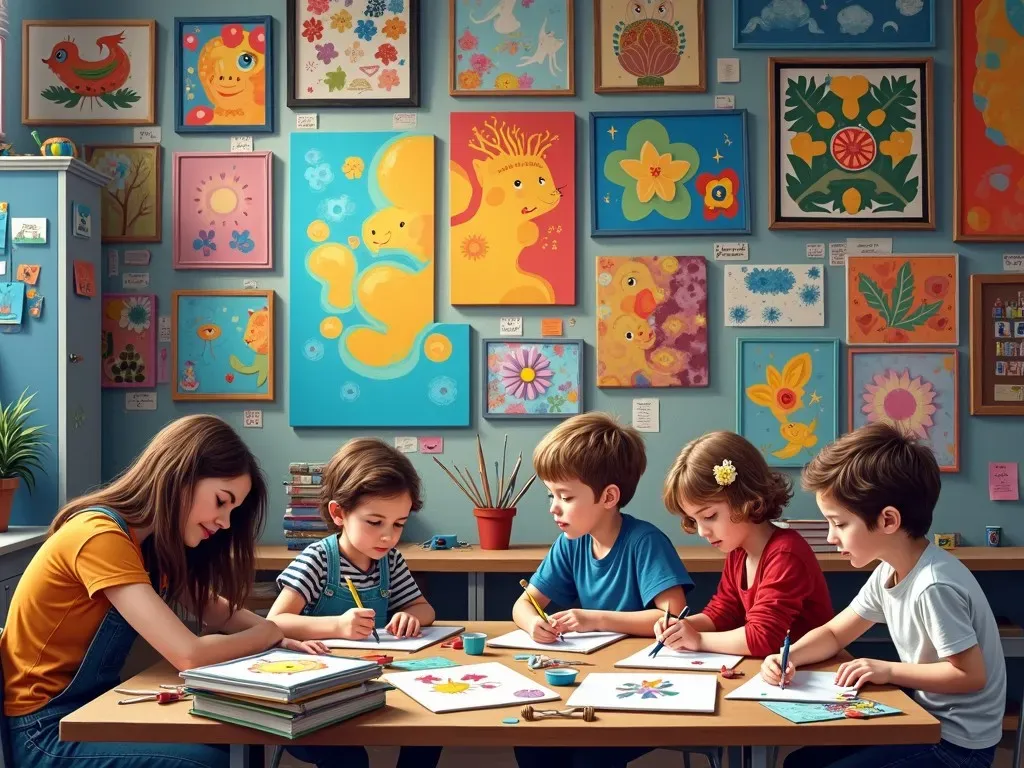The world of art is rich and diverse, filled with interesting artists whose unique styles and perspectives have shaped cultural narratives throughout history. Some of these artists are renowned for their innovative contributions, while others captivate audiences with their unconventional Techniques. This article explores a selection of interesting artists, illuminating their journeys and the impact they’ve had on the art world.
The Evolution of Art: Notable Movements and Artists
Throughout history, various art movements have emerged, each characterized by unique styles and ideologies. Here’s a quick overview of some influential art movements and the interesting artists associated with them:
| Art Movement | Time Period | Notable Artists |
|---|---|---|
| Renaissance | 14th-17th Century | Leonardo da Vinci, Michelangelo, Raphael |
| Baroque | 17th-18th Century | Caravaggio, Rembrandt, Peter Paul Rubens |
| Impressionism | Late 19th Century | claude monet, Edgar Degas, Pierre-Auguste Renoir |
| Modernism | 19th-20th Century | Pablo Picasso, Henri Matisse, Jackson Pollock |
| Contemporary | 20th-Present | Damien Hirst, Jeff Koons, Yayoi Kusama |
Remarkable Contributions by Interesting Artists
One of the most captivating aspects of art is the variety of voices that contribute to its advancement. Interesting artists have explored countless themes and concepts through diverse mediums. Here are a few remarkable artists worth noting:
1. Yayoi Kusama
Known for her polka dot motifs and infinity rooms, Yayoi Kusama stands out as one of the most influential contemporary artists. Her installation art captivates audiences and invites them to experience a sense of infinity and repetition, challenging perceptions of reality.
2. Ai Weiwei
As a prominent activist and artist, Ai Weiwei uses his works to communicate messages about freedom, justice, and human rights. His installations, sculptures, and political activism have made him an interesting figure in contemporary art.
3. Banksy
With a style that blends social commentary and humor, Banksy remains an enigmatic figure in the art world. His street art challenges societal norms and initiates conversations around pressing issues, making him both a cool artist and a cultural icon.
4. Frida Kahlo
Frida Kahlo’s self-portraits and vibrant use of color express her identity and experiences as a woman, an artist, and a Mexican national. Her unique artistic vision continues to resonate with fans around the world.
Reference Video
Statistical Insights into Popular Visual Artists
Art enthusiasts frequently seek out works by popular visual artists. The following statistics illustrate the engagement and interest in various artists across different platforms:
| Artist | Social Media Followers (Approx.) | Auction Price Range |
|---|---|---|
| Banksy | 2 million+ (Instagram) | $60,000 – $23 million |
| Yayoi Kusama | 1 million+ (Instagram) | $5,000 – $24 million |
| Damien Hirst | 1.5 million+ (Instagram) | $4,000 – $19 million |
| Jeff Koons | 1.3 million+ (Instagram) | $10,000 – $58 million |
| Frida Kahlo | 900,000+ (Instagram) | $2,000 – $8 million |
Unique Painters Who Define “Cool” in Art
When discussing cool artists, a few names inevitably come to the forefront, each making their mark through innovation and distinct styles. Here are a few artists known for their cool factor:
- Keith Haring: Haring’s work, characterized by bold lines and vibrant colors, echoes messages of love and social activism.
- Jean-Michel Basquiat: His graffiti-inspired compositions explore themes of race and identity, pushing the boundaries of conventional art.
- Yayoi Kusama: Known for her immersive infinity rooms, Kusama redefines how art can be experienced, making her a unique force in contemporary art.
The Impact of Arts on Society
Art does not exist in a vacuum; it is deeply intertwined with society and often reflective of cultural shifts. Interesting artists play a pivotal role in this dynamic by provoking thought and emotion through their creations. Here are some notable impacts:
1. Cultural Reflection
Many artists draw Inspiration from the socio-political climate of their time, making artworks that resonate with audiences on deeper levels. The works of artists like Banksy and Ai Weiwei often speak to contemporary issues and discontent.
2. Emotional Engagement
Art has the unique ability to evoke emotions—whether despair, joy, or nostalgia. For instance, Frida Kahlo’s works often express pain and passion, making a personal connection with viewers.
3. Educational Value
Art serves an educational purpose, allowing viewers to engage with diverse perspectives and historical contexts. Institutions worldwide curate exhibitions featuring interesting artists to educate the public on various artistic movements.
FAQs
Who are considered the most interesting artists of the modern era?
Artists like Yayoi Kusama, Banksy, and Ai Weiwei are often mentioned for their innovative techniques and impactful themes.
How has social media affected the popularity of artists?
Social media platforms enable artists to reach broader audiences, fostering direct connections with fans and facilitating the sharing of art in real-time.
Are there any art movements that focus on social issues?
Yes, movements such as street art and protest art prioritize themes of social justice, environment, and human rights.
Can anyone become an artist?
Absolutely! While formal training can help, talent is not solely dependent on qualifications. Passion and creativity are essential ingredients for becoming an artist.
How can I learn more about interesting artists?
Resources like My Modern Met provide insights and articles on artists and their works, as well as educational materials related to different art movements.
Through the exploration of interesting artists, one can appreciate the myriad ways in which creativity shapes our understanding of the world. Be it through groundbreaking installations, thought-provoking street art, or intimate self-portraits, the diversity of artistic expression continues to inspire and engage audiences of all kinds.
